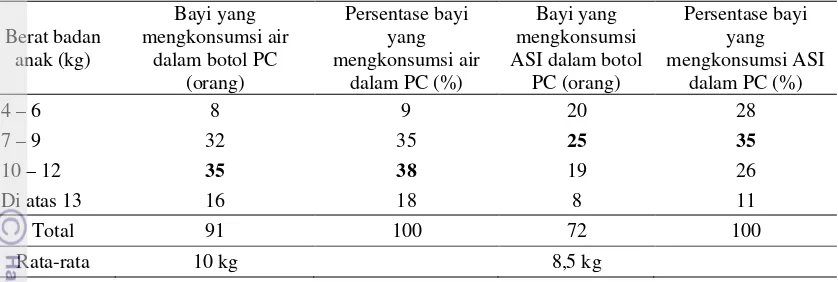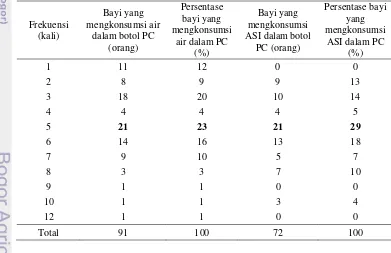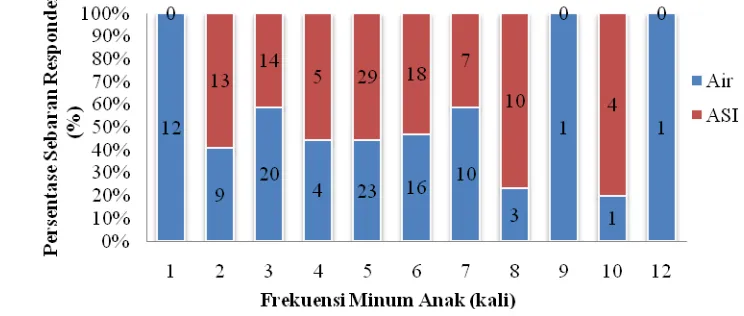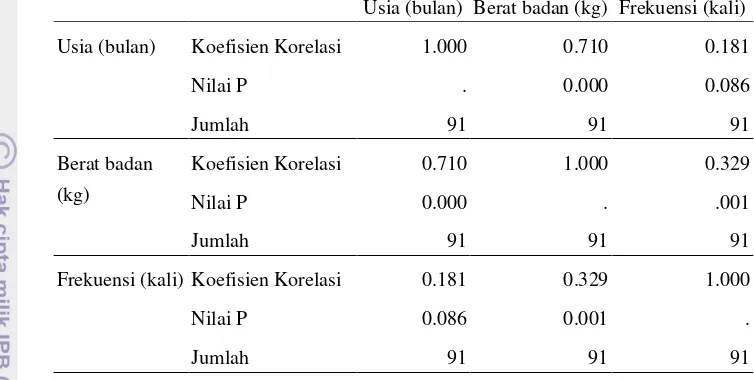I. Introduction
This research paper, 'Kajian Paparan Bisphenol-A dari Botol Susu Polikarbonat dalam ASI dan Air pada Bayi', investigates Bisphenol-A (BPA) exposure from polycarbonate milk bottles in breast milk and water consumed by infants. The study's significance lies in its contribution to understanding the potential health risks associated with BPA exposure in vulnerable infant populations. The limited maternity leave policies in Indonesia, forcing working mothers to use bottle feeding, highlights the crucial need for this research. This introduction establishes the context of insufficient maternity leave, the prevalent use of polycarbonate bottles for storing breast milk, and the potential health risks associated with BPA leaching from these bottles. This creates a strong rationale for the study, grounding it in both socio-economic realities and public health concerns.
1.1. Background
The study is motivated by the insufficient maternity leave provided to working mothers in Indonesia, hindering exclusive breastfeeding practices recommended by the World Health Organization (WHO). The widespread use of polycarbonate (PC) bottles to store breast milk and water raises concerns about BPA exposure, a known endocrine disruptor. The introduction highlights the potential negative health effects of BPA, even in small doses, on infants whose detoxification systems are not yet fully developed. This background section establishes the practical and public health motivations behind studying BPA exposure in infants through PC bottles, linking societal realities with potential health implications.
1.2. Objectives
The general objective is to assess BPA exposure from polycarbonate milk bottles in breast milk and water for infants. Specific objectives include: (i) Determining the distribution of respondents using polycarbonate bottles based on various demographic and behavioral factors; (ii) Estimating BPA exposure levels from polycarbonate bottles in breast milk and water based on infant consumption patterns; (iii) Investigating the relationship between bottle treatment methods (sterilization, storage conditions) and BPA migration into the milk and water. This section clearly articulates the research goals, establishing a measurable and focused scope for the investigation and ensuring clarity on the expected outcomes and methodology.
II. Literature Review
This section provides a comprehensive overview of existing literature related to polycarbonate, BPA, its migration from PC materials, breast milk, and purposive sampling methodologies. It explores the chemical properties of polycarbonate and BPA, detailing the manufacturing process and the instability of BPA bonds leading to its migration into food and beverages. The review also covers the known health risks associated with BPA exposure, citing relevant studies and regulatory actions taken by various countries. Finally, it discusses the characteristics of breast milk and its nutritional importance for infants, as well as justifying the use of purposive sampling in this study. This ensures a complete foundation on which the research is built.
2.1. Polycarbonate, BPA, and BPA Migration
This subsection delves into the chemical properties of polycarbonate and BPA, explaining their relationship in the manufacturing process and emphasizing the instability of the chemical bonds. It discusses the factors that influence BPA migration from polycarbonate materials, such as temperature, contact time, and the type of food or beverage. The section highlights previous research on BPA migration from PC bottles and the varying results, providing a critical analysis of the existing data and establishing the need for further investigation, particularly in the Indonesian context. It also contrasts the regulatory approaches taken by various countries regarding BPA.
2.2. Breast Milk (ASI)
This section focuses on the nutritional value and importance of breast milk for infants, highlighting its unique composition and its role in providing essential nutrients and immunities. It discusses the benefits of exclusive breastfeeding and emphasizes the risks associated with improper storage and handling of expressed breast milk. This section forms a critical backdrop for the study, emphasizing the importance of protecting the nutritional and immunological value of breast milk from potential BPA contamination.
2.3. Purposive Sampling
This subsection justifies the choice of purposive sampling methodology. It explains the characteristics of purposive sampling, its advantages for focused research targeting specific criteria, and its limitations. It contrasts this with other sampling methods, highlighting why purposive sampling was the appropriate choice for this particular study given the specific characteristics of the target population (mothers using PC bottles) and the research objectives. The justification is critical for establishing the validity of the research approach.
III. Research Methodology
This section outlines the research design, including the study timeline, geographical location, data collection methods, data analysis techniques, and the estimation of BPA exposure. The description of data collection methods (direct interviews using questionnaires) is detailed, and the rationale behind the choice of purposive sampling is reiterated. The methodology is clearly defined for replication and scrutiny. The procedure for BPA exposure estimation, including the assumptions made (100% BPA migration in worst-case scenario), is transparently explained.
3.1. Time and Place
This subsection specifies the duration and geographical locations of the study, providing details on the cities included (Jakarta and Bogor) and the specific sites where data were collected (hospitals, clinics, and health centers). This allows for understanding the study's scope and potential limitations.
3.2. Research Methods
This section details the three stages of the research process: data collection, data processing, and BPA exposure estimation. The data collection method, utilizing a structured questionnaire administered during direct interviews, is explained, along with the justification for the purposive sampling technique. The data processing procedures involving grouping based on various demographic and behavioral factors are outlined. The BPA exposure estimation method is explained, emphasizing the assumption of 100% BPA migration to derive a conservative estimate.
IV. Results and Discussion
This section presents the findings of the study and interprets them within the context of the literature review. It begins by describing the survey data on food consumption and then analyzes the distribution of respondents based on various factors such as education, occupation, bottle brand, and sterilization methods. The estimated BPA exposure levels are presented, and their comparison with the Tolerable Daily Intake (TDI) value established by EFSA is discussed. The section thoroughly connects the findings to the research objectives and explores the implications of the results for public health and policy.
4.1. Food Consumption Survey
This subsection presents the data gathered from the food consumption survey, providing a descriptive analysis of the distribution of respondents based on various factors. This is crucial for understanding the characteristics of the study population and providing context for interpreting the BPA exposure estimates. The findings are presented clearly, using tables and figures, and are analyzed to reveal significant trends.
4.1.1. Respondent Distribution by Education Level
This subsection presents data on the education level of the respondents and its relationship with the use of polycarbonate bottles. It shows the percentage of respondents at each educational level (SD, SMP, SLTA, S0, S1, S2) who used polycarbonate bottles for storing water and breast milk. The analysis highlights that higher education levels did not necessarily correlate with a lower likelihood of using polycarbonate bottles, underscoring the need for broader public education campaigns.
4.1.2. Respondent Distribution by Occupation
This subsection analyzes the relationship between the occupation of the respondents and the use of polycarbonate bottles. It breaks down the respondents into occupational categories (housewives, private employees, civil servants, self-employed) to explore potential differences in bottle usage patterns. This analysis examines if there is a correlation between employment status and the likelihood of using polycarbonate bottles. The findings are linked back to the broader issue of limited maternity leave and the need for supportive policies.
4.1.3. Distribution of Polycarbonate Bottle Brands
This subsection presents the data on the distribution of various brands of polycarbonate bottles used by the respondents. The analysis focuses on the prevalence of specific brands, examining whether certain brands are more commonly used than others. This section relates brand popularity to consumer perception, affordability, and market dynamics.









